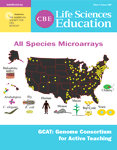Potent Cells
INTRODUCTION
It seems hard to believe that Dolly the cloned sheep was born 10 years ago, kindling furious arguments over the prospects and ethics of cloning a human. Today, the controversy over cloning is entwined, often confused, with concerns over the use of human embryonic stem cells. Most people are unclear what cloning is, and they know even less when it comes to stem cells. In teaching, it can be engaging to lead with a controversy or to start with the medical promise of a given research topic. For stem cells, however, it's important to impress upon students the essential role of stem cells in the natural processes of development and regeneration before getting into potential medical benefits, let alone controversies. This issue's WWW.Life Sciences Education Feature will focus on stem cells: What are they? What aren't they? and What are the ethical issues that our students should consider?
STEM CELLS, DEVELOPMENT, AND REGENERATION
When I was a kid, the local science museum had a small theater that was devoted to multiheaded monsters. On a given day, you could see a short presentation on the science of regeneration, and the living star of the show was a little flatworm—magnified to giant proportions via overhead projector—with at least two heads (six heads was the most that I personally witnessed). Today, I'm sketchy on the explanations offered of why these creatures could grow and maintain multiple heads, but the experience obviously stuck with me, and there has never been a better time to use Planaria to engage students in the science of regeneration and stem cells. Rachel Fink at Mount Holyoke College (South Hadley, MA) has posted a couple of movies of two-headed Planaria in action, along with some other information on these exciting animals (www.mtholyoke.edu/courses/rfink/Videopages/video3.htm). You will need the QuickTime plug-in to view these movies on a Windows-based computer, and unfortunately they are based on an early video code that is not supported by current Macs using OS X. Multiheaded worms are possible because of the remarkable ability of Planaria to regenerate, based on a large population of stem cells distributed throughout their bodies.
Currently, Planaria science is experiencing a renaissance, and it's worth visiting the website (Figure 1) of one of the leaders in this revitalization, Alejandro Sanchez Alvarado (http://planaria.neuro.utah.edu). You can view a video and other web features to learn more about how research in Planaria is contributing to the understanding of stem cells and key regeneration genes. The Alvarado lab studies the distribution and activation of Planaria stem cells during regeneration. Very small pieces of a Planaria, as little as 1/200 of the body, can regenerate an entire animal! Although humans don't have stem cells distributed throughout our bodies like Planaria, we do express some of the same regenerative genes, and flatworms may provide lessons for better understanding the limits and potential of vertebrate regeneration. Although generating many-headed Planaria is not a core research approach of the lab, Alvarado claims that his personal record for multiheaded Planaria is well more than a dozen.
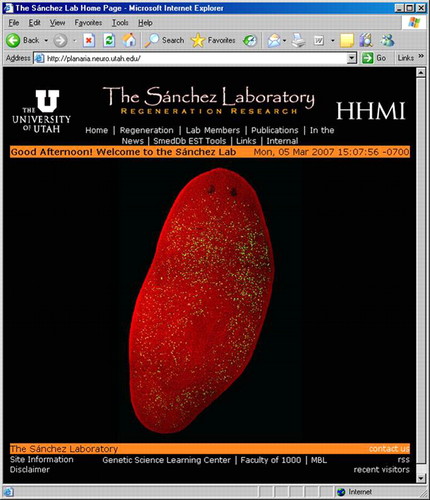
Figure 1. Alejandro Sanchez Alvarado's website.
Perhaps even more fundamental than regeneration is the role that stem cells play in normal embryonic development. At the Howard Hughes Medical Institute's BioInteractive website (Figure 2; www.biointeractive.org), Doug Melton, a leading stem cell researcher, addresses normal development in his lectures aimed at high school students. There are four stem cell lectures available to view by streaming video (www.hhmi.org/biointeractive/stemcells/lectures.html). In the first lecture of the series, Melton begins with a two-minute animation (superbly drawn by Blake Porch) encapsulating all of human development from egg to infant. The animation highlights cytoplasmic factors in the egg, cell division and migration, and the formation of the germ layers. Melton particularly emphasizes the potential of the inner cell mass (ICM; commonly referred to as embryonic stem cells) to make all the different types of body cells. Later in the talk, another animation outlines how cells of the ICM can be removed from early embryos and used to culture lines of embryonic stem cells. A viewer can see that because cellular differentiation is progressive, the potential of stem cells is graded. The egg and ICM cells are totipotent (i.e., can form all possible cell types), whereas later in development, stem cells may be limited to making cells of a particular germ layer, and finally adult stem cells may be limited to differentiating into cells of only one particular tissue (e.g., gut lining stem cells). Melton's approach prepares students to understand better the promise and the controversy over research with embryonic versus adult stem cells (see sites reviewed below). Teachers may download all the BioInteractive animations (www.hhmi.org/biointeractive/stemcells/animations.html) for use in classrooms, and video segments are also available as stand-alone clips for those who do not want to spend class time showing someone else's lecture, or those who prefer to download video instead of streaming it directly from a website. The animations cover the following: human development, making stem cell lines, differentiation of stem cells, somatic cell nuclear transfer, zebrafish heart regeneration, and newt limb regeneration. Free DVDs of the full lecture series also can be ordered online.
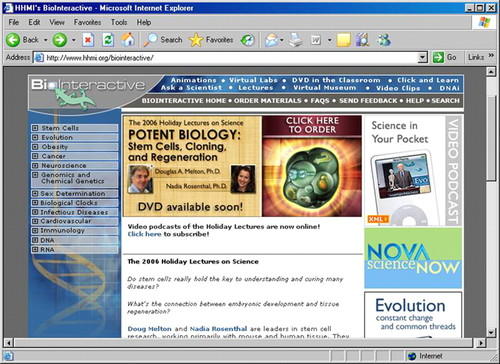
Figure 2. Howard Hughes Medical Institute's BioInteractive website.
Independent of the role of stem cells, some students will be interested in human development, and embryology provides an excellent context to address the controversy over using materials derived from human embryos. The Visible Embryo website (Figure 3; www.visembryo.com/baby/index.html) has a collection of images covering human development from fertilization to birth. The site uses a spiral icon that divides development into three unequal “trimesters” and allows the user to jump directly to particular images. Unfortunately, the spiral navigation tool is not present on every page, and once you are viewing a particular image you must either step through images or return to home to access the navigation. The images largely are based on data from embryos in the National Institutes of Health Institute of Child and Human Development collection and The Carnegie Collection of Human Development housed at Armed Forces Institute of Pathology in Washington, DC. The embryos are nicely rendered, although small. The actual size of the embryo is displayed for reference and comparison with each magnified image. The brief text that accompanies each image is concise and informative, and one of the best features of the site. Unfortunately, pseudocolor present on some images is not identified as such. Starting with 10 weeks postfertilization, additional useful graphics and information are added on specific organ systems. For example, at 22 weeks postfertilization, the bones of the inner ear harden and become functional (www.visembryo.com/baby/22_weeks.html). Most students and teachers would find this website a useful quick reference for human development.
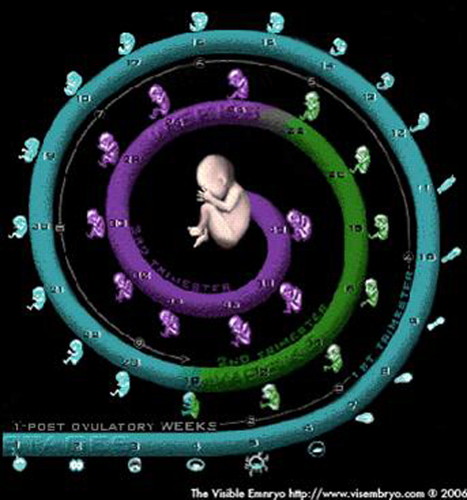
Figure 3. Visible Embryo website.
MEDICAL VALUE OF STEM CELLS
The University of Michigan (Ann Arbor, MI) has developed an online tutorial called Stem Cells Explained (Figure 4; http://lifesciences.umich.edu/). The feature uses artwork and narration in a Flash console to cover the essential basics of stem cell science, including Stem Cells Defined (4 minutes), Embryonic Stem Cells (4 minutes), Stem Cell Specialization (2 minutes), Adult Stem Cells (1 minute), Nuclear Transfer (4 minutes), and Drug Testing (1 minute). The topics are appropriate and easy to understand. I like the simple, attractive graphics, and the explanations are brief. I was less fond of the narration that had the tone of a smooth marketing pitch, and some pronunciations will grate on the ears of those familiar with the terms. However, all of the narration is presented as text next to the moving graphics. The console has controls for pausing, replaying, moving forward, backward, and turning off the sound. If you simply play the tutorial in its entirety, it runs just under 15 minutes, and it would have been good to inform the viewer ahead of time. Overall, the tutorial has solid information, but the level of sophistication is less than some teachers may want, using terms such as “versatile,” in place of potent, and “specialization” instead of “differentiation.” A mistake in the narrative in the Nuclear Transfer section says that the donor nucleus is “inserted into the donor egg's nucleus” instead of saying that the donor nucleus is inserted into the egg in place of recipient egg's own destroyed or removed nucleus. I liked the choice of in vitro drug testing on stem cells as an example of a stem cell medical application, as opposed to stem cell transplantation as direct therapy.
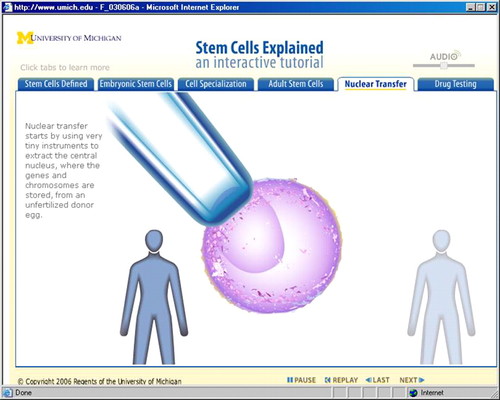
Figure 4. Stem Cells Explained online tutorial.
The University of Utah Genetic Science Learning Center (Salt Lake City, UT) has a variety of excellent resources, especially for teachers, developed with strong input from teachers. They have a feature called Stem Cells in the Spotlight (Figure 5; http://learn.genetics.utah.edu/units/stemcells/). On the index page, the stem cell material is organized into the topics: What is a Stem Cell?, What are Some Different Types of Stem Cells?, What is the Goal of Stem Cell Research?, Stem Cell Therapies Today, Stem Cell Therapies in the Future, Creating Stem Cells for Research, and What are Some Issues in Stem Cell Research? The length of each section varies, so sections can be selected depending on how much time you want to spend exploring.
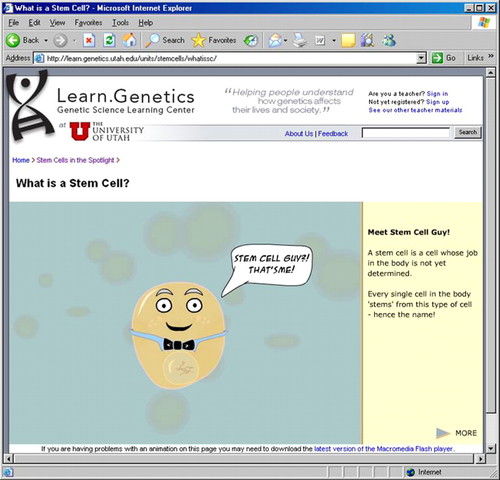
Figure 5. Stem Cells in The Spotlight feature article.
The first topic, What is a Stem Cell?, is an interactive tutorial, featuring a character named Stem Cell Guy, and several short animations. Although the approach of using a cartoon character and humorous sound effects probably loses some charm with older students and adults, many middle school and even high school students might find it engaging. To accompany the kid-friendly approach, the site features very brief text to support the graphics. The idea of Stem Cell Guy going into a “differentiation booth” is a fun and an effective way of showing students that there are different signals that cue stem cells to take various differentiation pathways. However, by creating a character, it is somewhat more difficult to make the point that the key property of stem cells is that they can make differentiated cells AND reproduce themselves. Overall, I think most viewers would have the impression that stem cells respond to cues to directly become some sort of differentiated cell, whereas in reality the process is iterative and an entire population of stem cells must be considered. This section of the website is meant to engage young students in the topic of stem cells and to expose them to a couple of fundamental concepts. Students are then encouraged to go onto What Are Some Different Types of Stem Cells?, where more information on stem cells is delivered in a linear manner, and stem cell potency and progressive differentiation are explicitly addressed. The other sections of the website present solid information at audience-appropriate levels, in straightforward static Web pages combining graphics and text. The quizzes are a good feature of the site, and they are creative, appealing to students' competitive nature and stimulating more meaningful interaction with the material.
STEM CELLS AND THE PUBLIC
The news media, and other popular treatments of stem cells, naturally have focused on the medical implications of human embryonic stem cells and on the controversy of using material derived from human embryos. The new magazine-format PBS program NOVA ScienceNOW has a good website (Figure 6; www.pbs.org/nova/sciencenow) where the programs' video segments (3–15 minutes) are available to view or download. If you go to their archives (http://www.pbs.org/nova/sciencenow/archive/subject-bioscience.html) and scroll to the bottom, you can find a pair of videos covering the topic of stem cell research. The 2005 video runs 15 minutes, and it begins with a 15-year-old diabetic girl, quickly drawing the viewer into her personal story of incessant blood tests and rigorous diet. Students will want to understand her disease, and to cure her. As the story develops, leading researchers such as Doug Melton, George Daley, Leonard Zon, and Kevin Eggan explain research strategies and key findings. Melton is particularly good at explaining why basic researchers currently are excited about the research potential of stem cell lines. They hope to create cultures of diseased cells as an unlimited supply of cells to learn exactly how these cells develop the disease in the controlled environment of the lab. The video also outlines using somatic cell nuclear transfer to establish embryonic stem cell lines based on cloning donor cells of desired genotypes (e.g., someone who developed diabetes). The fraudulent work of the South Korean group that had claimed to derive embryonic stem cell lines from cloned human embryos is mentioned, so it is important to watch the 2006 video, which is a useful update to the original 2005 story. The update corrects the record on the South Korean experiments that, to the producers' credit, does not change substantially their original report. The update segment features the technique of deriving stem cells from embryos that have had their potential to continue with embryonic development genetically disabled. Although interviews with leading scientists are an important aspect of the ScienceNOW segments, good animations and graphics aid the scientific explanations. As the videos run, links to relevant features on the website can be viewed in the video window, such as additional information on a researcher, a research method, or an opinion poll on stem cell research.
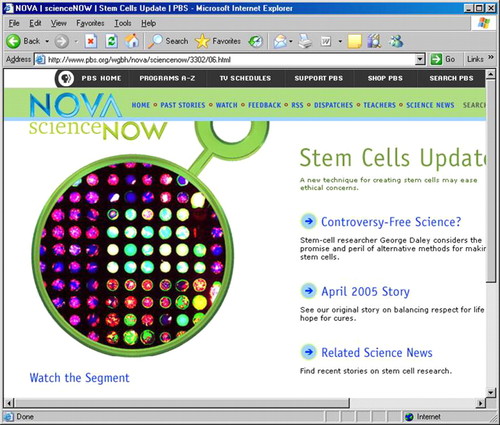
Figure 6. PBS program NOVA ScienceNOW website.
Before multimedia and video were readily available online, print media was the most popular source of information, and for those who like to read, Boston Globe reporter Gareth Cook won lots of recognition (2005 Pulitzer Prize) for his reporting on the issues surrounding stem cells. The Globe has a nice collection of Cook's writings as well as other reporters on a page called The Stem Cell Debate (www.boston.com/news/science/stemcell/). It would be interesting to survey the responses of students to these articles before or after they had viewed some of the more graphic-based websites described above.
STEM CELL POLICY, ETHICS, AND RESEARCH GUIDELINES
Will opinions regarding embryonic stem cell research shift once the public learns that a viable stem cell therapy for a prominent disease is actually in clinical trials? The lack of viable therapies and confused state of policy and legislation concerning the use of embryonic stem cells contribute to public ambivalence on the topic. Listed below are a subset of websites that address issues regarding the regulation and use of embryonic stem cells.
The American National Academies' stem cell website (http://dels.nas.edu/bls/stemcells/) provides access to some excellent publications on stem cells in PDF format. The National Academies also developed a set of guidelines for the use of human embryonic stem cells in research given the lack of clarity in U.S. law.
The United Kingdom-based Hinxton Group (www.hinxtongroup.org) is probably the best source for information on stem cell research policies worldwide as well as for global news on stem cell research.
The International Society for Stem Cell Research (ISSCR) (www.isscr.org), recently published (February 2007) Guidelines for the Conduct of Human Embryonic Stem Cell Research. If you ask various experts how many human embryonic stem cell lines are available for research, you will get various answers. The ISSCR site contains information on 20 published lines and five unpublished lines. The website has sections for members, scientists, the public, and the media, with information on stem cell basics, more advanced information, perspectives, and a glossary. There is also a small collection of videos and images.
The European Consortium for Stem Cell Research website hosts sections aimed at the public and professional scientists (www.eurostemcell.org/). In their About Stem Cells section (www.eurostemcell.org/Outreach/outreach_film.htm), they feature several short films, available to stream or as podcast. The award-winning A Stem Cell Story is quite good and is available in several languages. The movie emphasizes development, cell fate, and cellular differentiation. The animations have a nice draftsmen-like graphic style. The film uses maps as a metaphor for stem cell differentiation pathways. The final section of the film emphasizes clinical benefits, featuring neurons, drug screening, transplantation, and reduced need for animal testing. You will need a current Flash Player to view the films, which are also available on DVD. The European perspective (you can choose narration in English, French, German, Italian, Swedish, or Dutch) may be particularly interesting for Americans, and an important reminder about the importance of cultural context when thinking about science and societal issues.
The Royal Society website (www.royalsoc.ac.uk/landing.asp?id=1202) features stem cells and cloning as part of its series covering scientific topics with strong impacts on society like climate change, energy, and genetically modified crops. The website has good navigation and an array of features to enumerate scientific and ethical issues.
STEM CELL ADVOCACY
The Stem Cell Research Foundation is a nonprofit organization dedicated to promoting stem cell research for medical benefits. Its website (Figure 7; www.stemcellresearchfoundation.org/WhatsNew/EmbryonicStemCells.htm) features a very good animation done by the Sumanas company featuring its characteristic clear graphic approach.
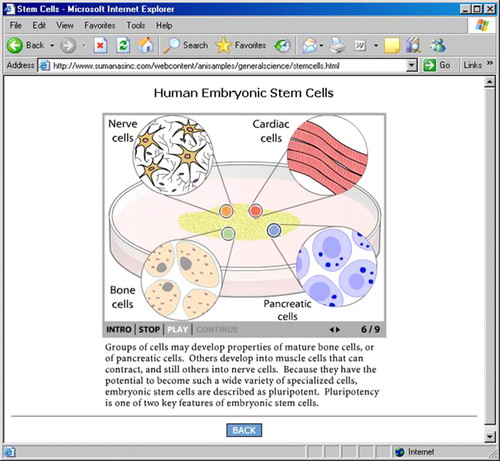
Figure 7. Stem Cell Research Foundation website.
Do No Harm (www.stemcellresearch.org/) is devoted to a position opposing research with embryonic stem cells, “Obtaining stem cells from human embryos cannot be ethical because it necessarily involves destroying those embryos.” Just browsing, it can be difficult at first to understand the orientation of the website, so go straight to the Founding Statement link. The website contains a lot of general news on stem cells, and it takes a clear ethics position. It has a couple hundred signatories, including many in the health and education professions.
In contrast to Do No Harm, The Vatican Declaration contributes to the ethical debate about stem cell research by taking a very clear but less vociferous stance (www.vatican.va/roman_curia/pontifical_academies/acdlife/documents/rc_pa_acdlife_doc_20000824_cellule-staminali_en.html). The document is well written, well reasoned, and based on evidence, including modern biology and the current state of cloning and stem cell technology. The Vatican Declaration concludes that the destruction of embryos is gravely immoral, “On the basis of a complete biological analysis” showing that a human life is formed “from the moment of the union of the gametes” (i.e., at fertilization).
Finally, why not go to the source? The University of Wisconsin (Madison, WI) is where the first human embryonic stem cell lines were developed by James Thomson. The University of Wisconsin Embryonic Stem Cells site (www.news.wisc.edu/packages/stemcells/?get=es_gpt) has basic information on stem cells, updates on stem cell research, and also stem cell news available for Really Simple Syndication (RSS) subscription. The University of Wisconsin has patented these cell lines and created a for-profit company (www.wicell.org/) that sells and distributes Thomson's cell lines.
Note on previous review: In response to my previous WWW.Life Sciences Education review focused on methods for visualizing cells (Liu, 2007), a helpful reader pointed me to a useful website containing many excellent videomicroscopy movies of cells in action, the Journal of Cell Biology Annotated Video Collection (http://www.jcb.org/misc/annotatedvideo.shtml).
ACKNOWLEDGMENTS
I thank A. Malcolm Campbell for critical comments and helpful suggestions on this article.


